Colombia has always been on Scotty Laughland’s list. Then, one morning, while pulling a shot of espresso, he found himself curious about where the very coffee he was about to drink came from, the process of creating it, and the mountain bike scene there. And as with all of life’s mysteries, there’s only one way to discover more. Enjoy ‘Taste of Colombia,’ a story about bikes and coffee.
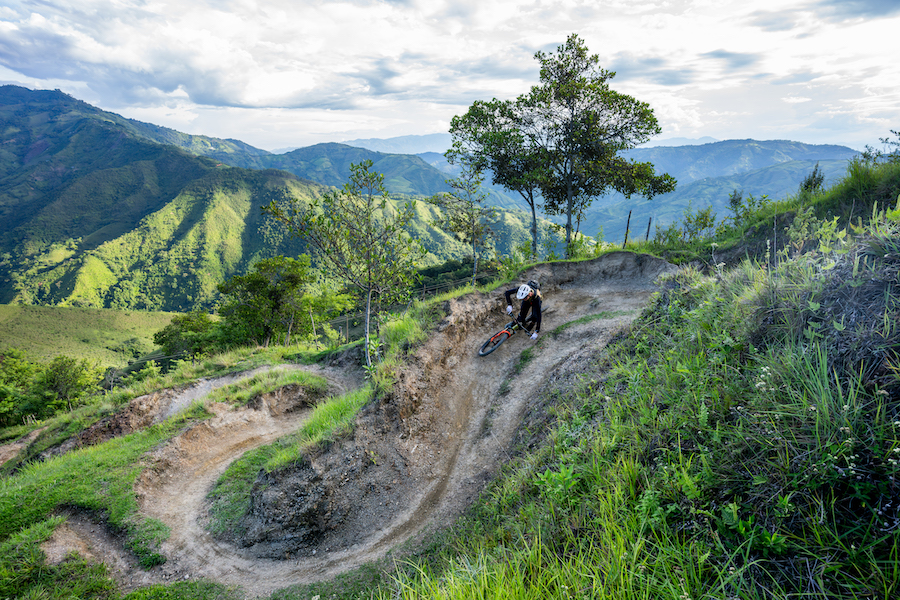
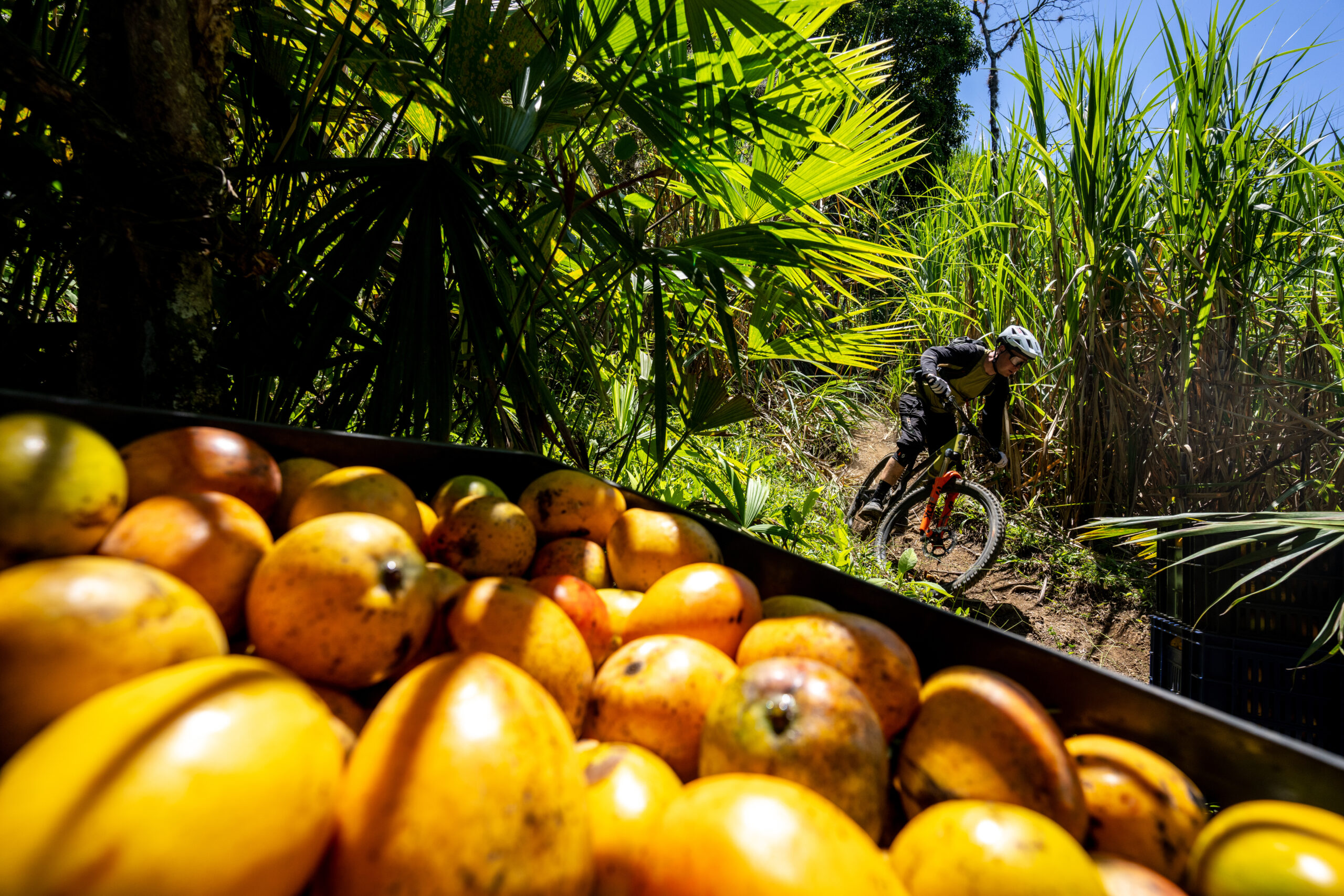
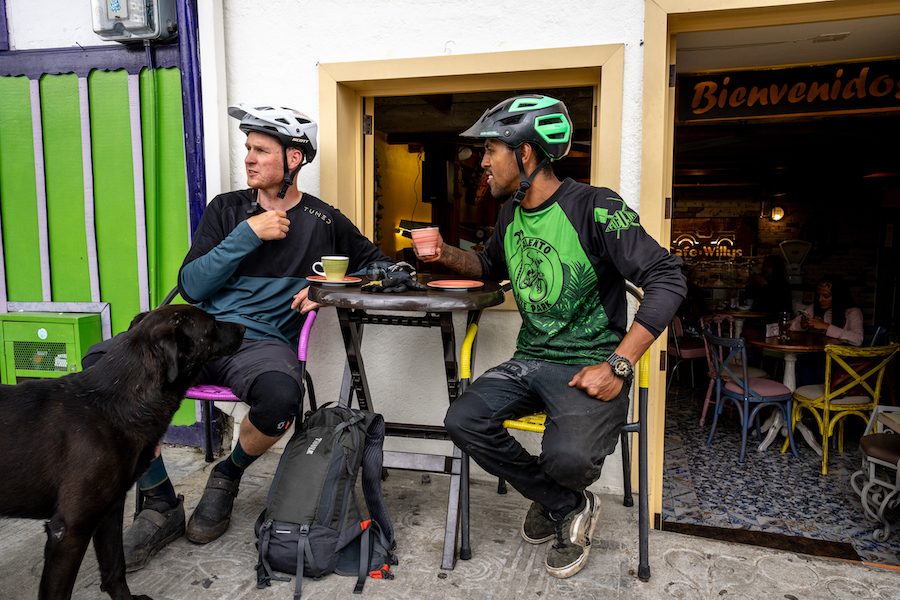
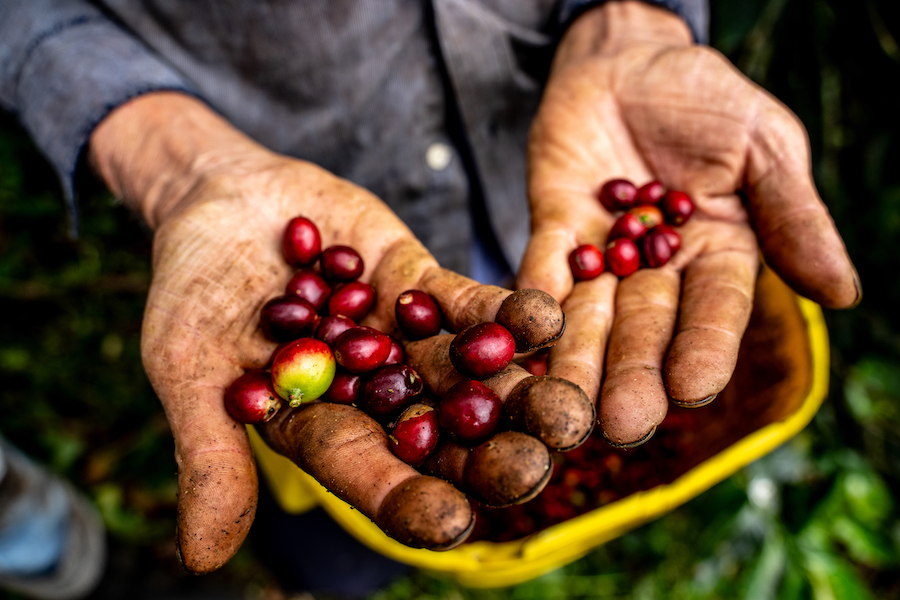
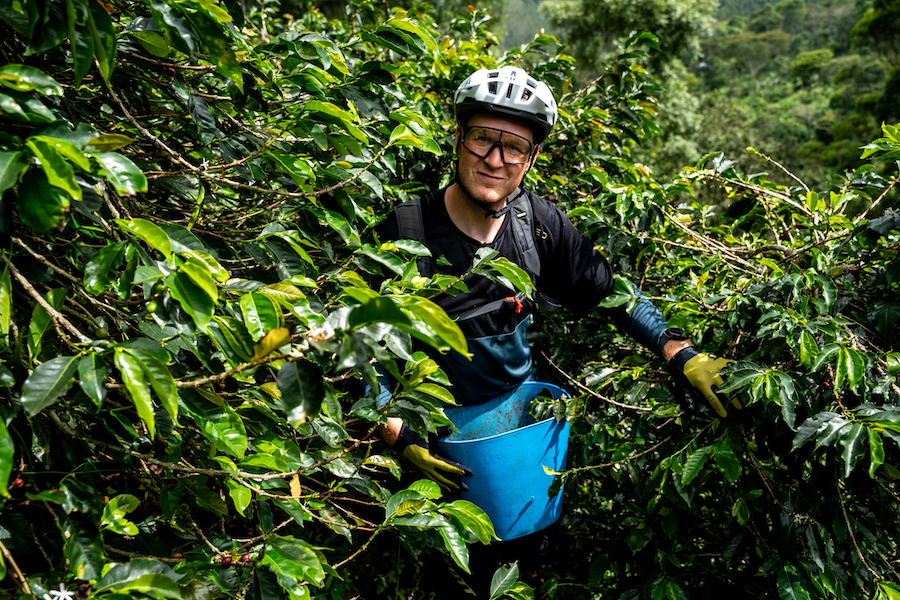
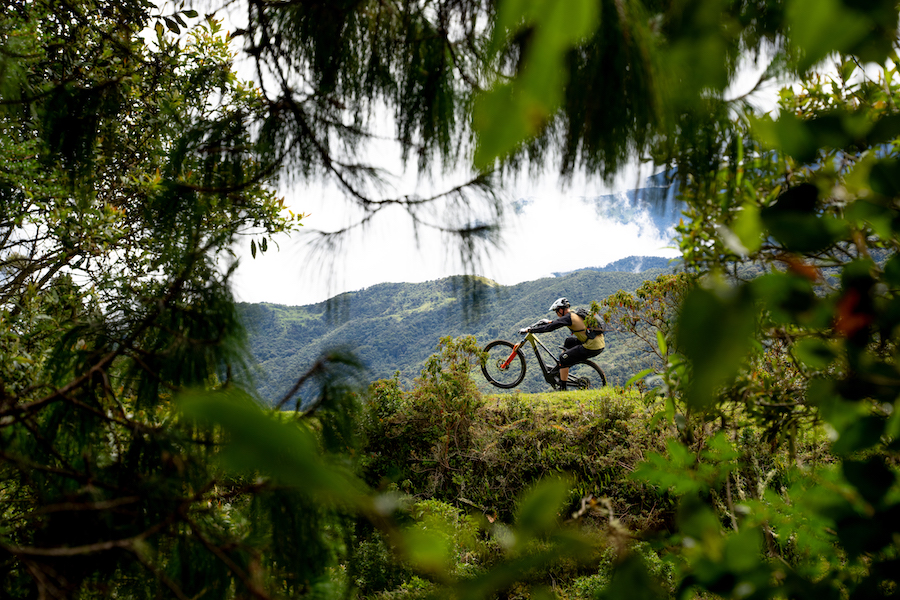
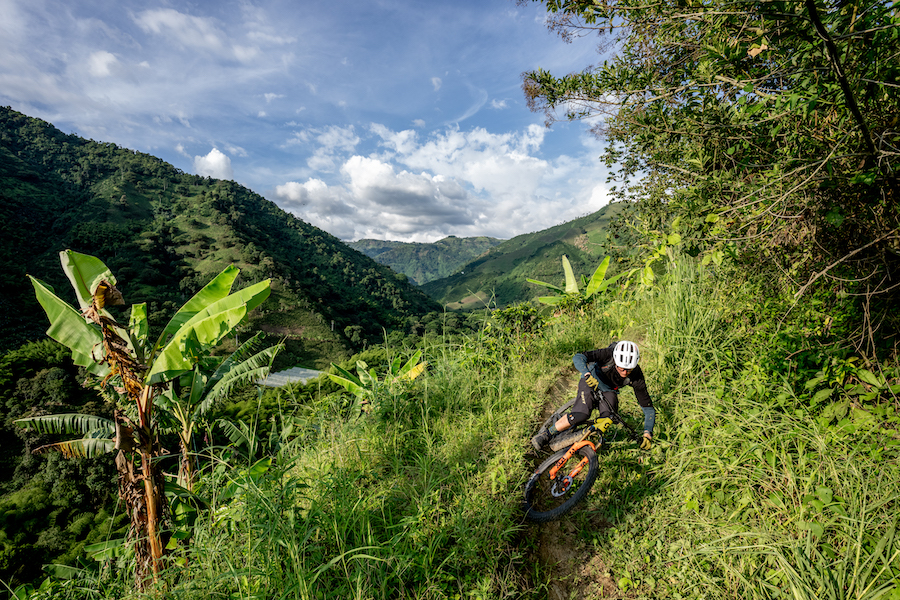
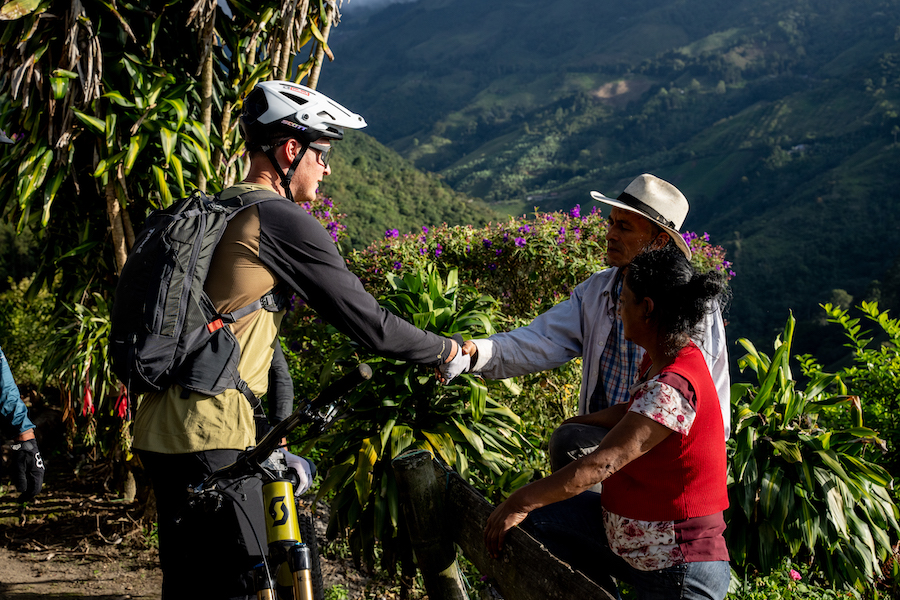
From Bogota to Breathtaking Trails
We flew into Bogota and spent the next 7 hours crossing the country to our starting point of Armenia. I was instantly amazed by the size of the mountains and the diversity of the landscape – we’d pass through the desert, thick forests of pine, and vibrant green vegetation with massive towering ferns.
On arrival, we got to work building the bikes. I don’t think any of us could contain our excitement to ride. There was still an unknown as to what the trails would be like, but our team of local riders assured us we wouldn’t be disappointed. Our tires touched down at an altitude of 3200m. We finished at 1500m on the valley floor in Calarcá. I was blown away.
Riding Through Coffee Country
Starting in the open, our tires traced along ridgelines, the cool breeze whispering past as we descended into gullies carpeted with pine needles that offered an otherworldly grip. It was as if we were gliding on air. We then plunged into dense, jungle-like foliage, the earth beneath us a tapestry of mulchy dirt and sinuous trails. Abruptly, the rhythm shifted; the ground turned damp and treacherous. Braking became a gamble, each turn a dance with gravity, as we slid, desperately seeking traction to navigate the bends.
It wasn’t long before we visited our first coffee farm midway down a trail. It was a small holding run by a husband and wife. They picked and processed everything themselves and lived for and from coffee. They even dried the beans on the roof of their house. Life here was different. The nearest water well was 500m away, and they lived 200m below the nearest road.
We discovered that once upon a time, Bernado, the owner, used to ride down to his farm by bike. Nowadays, though, he hitchhiked and then walked. You could see the impact on him. This life was challenging, physically demanding and clearly not that financially rewarding. They were humble and welcoming, offering us homemade lemonade and freshly brewed coffee from their beans.
Salento, Tejo, and Coffee in the Clouds
Salento was our next stop. A colorful, vibrant, and welcoming town. We shuttled up to a high point of 3600m off-road. The trails were similar but a bit better built and shaped. There were jumps, drops and berms in between flowing pieces of singletrack. Eventually, we rode through farmyards and deep canyons, which brought us back to where we started.
We had a chance to roam the town and discover what was on offer. Playing Tejo at a local bar was everyone’s highlight. Tejo’s a traditional Colombian throwing game where successfully hitting the target with a 1.1kg lump of steel meant the gunpowder would explode with a bang that echoed through the bar.
The next coffee farm was a little different. Whilst it was the end of the season, we headed out to look for pickers on the hill. This farm sat at around 1400m. The first big surprise to me was the humidity. The plants were tightly packed and I could feel the sweat dripping off of me.
We learned a lot about the process, the care, attention and love that goes into picking each piece of fruit. This is just one small part of the process. It would still have to be peeled, separated and dried before it could be sold and shipped worldwide.
The farmers are hard workers. They start picking at 6 am and spend their day in the plantations. The terrain was steep and slippery underfoot. The mosquitoes were relentless and every time you picked a berry, more mosquitos would feel invited to attack.
The sun beat down on us, and in 30 minutes, I picked around 1 to 1.5 kg of berries. Pickers were paid in weight rather than per hour. This haul wouldn’t even have brought me home a dollar. I finished my short shift covered in mosquito bites with a new appreciation for the hard work.
Manizales: The Mountain Bike Capital
We were told Manizales was the bike capital of Colombia. We quickly understood why. There were bike shop-lined streets of bike shops with people happily commuting here and there. In the central park, there was an array of bike trails, jumps, berms, and natural features that had even been used in the 2018 EWS.
We dropped into the forest, took on big compressions, flowed round well-built berms and hit tabletops, it made for a really fun trail that was easy to lap and kept you wanting to do run after run. We moved on to a mountain sitting above the city. The trails here were no different. Three purpose-built enduro/downhill runs that had sizable features and yet again flowed so well.
Colombians drink coffee differently. Most of their high-quality beans get shipped out, as it’s the country’s biggest export. That leaves them with the ‘poorer’ beans, and in their eyes, to make it drinkable, they add sugarcane, which also readily grows thanks to the wet and humid Colombian climate.
Mules are used to transport sugar cane and their trampled tracks through the steep hills produce perfect winding ribbons of singletrack. The water erosion had washed away the top clay layer, and the trail was down to soft, sandy, and perfect dirt, which whipped up as you hit each turn.
Santa Barbara: Coffee Perfection and Epic Trails
Santa Barbára was our penultimate stop of the trip, nestled in the Antioquia region of Colombia – it’s one of the best areas for coffee growing and is home to some of the finest beans in the world. The same could be said for the bike trails; long, perfectly balanced with a mix of technical and flowing terrain would wind through the jungle and we’d pass mango trees where the farmers would be out picking.
It was harvesting season, and I’d never seen this done before. The work that went into collecting each mango was impressive; all were hand-picked and gently placed into baskets ready to be transported by mules.
The mountainside opened up, and we rode maybe the best series of natural switchbacks I’ve ever ridden. Banked corners, perfectly spaced with the right amount of grip that you could trust and lean into. The views were some of the finest of the trip: coffee plantations, dense jungle, and spine-like ridgelines. We dropped back into the forest and arrived at the valley floor more than an hour later.
Medellin: A Cultural Hub with Thrilling Trails
The trip finished in Medellín, where we discovered the cultural transformation of Comuna 13. Bright, vibrant colors matched the kindness and welcoming vibes of the Colombians we’d met throughout our trip. The trails on this last stop were no different to anything else. Situated above the city, we could see the entirety of Medellín.
The ground was hard, the trails were fast, and you could go big on them if you wanted to. One section was MTB perfection, dropping into a gully and bouncing from turn to turn, flowing and building momentum. We met another group of riders and realized from how they talked that we’d only really scratched the surface of Colombian MTB’ing.
Before you Go
Colombia offered a unique blend of adventure—the thrill of mountain biking and the rich history and dedication behind its world-famous coffee. Our journey left us with unforgettable memories, a newfound appreciation for Colombian culture, and a deeper appreciation for that perfect cup of coffee.
